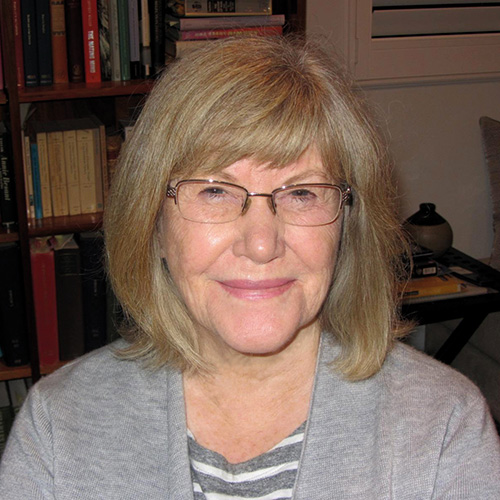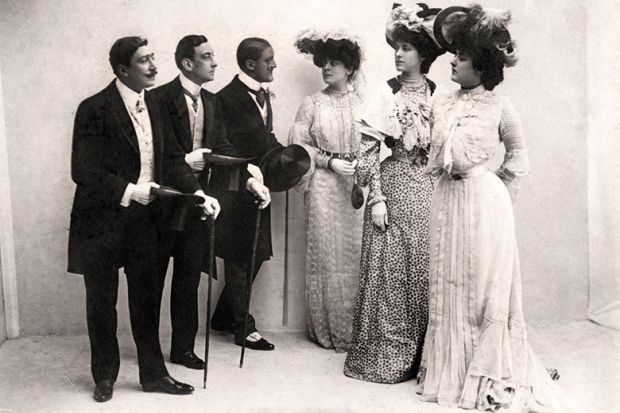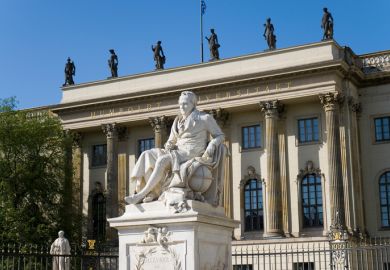Most people can name the book by Charles Darwin, even if it’s not uncommon for the title to be misquoted: such is the synonymy between Darwin and On the Origin of Species. The mythology that has developed around Darwin has him voyaging on the HMS Beagle, conceiving natural selection, and then agonising over his book for years until he was spurred into action after receiving a letter from Alfred Russel Wallace describing the same idea that Darwin had been sitting on for so long.
This may well be the best-known example of writer’s block, and certainly the only one with its own mini-publishing industry. It’s often joked that Darwin’s masterpiece would have attracted the ire of those responsible for universities’ research excellence framework submissions. “Well, Charles, you see it’s only the one book written over 20-odd years and then produced by a popular publisher; this is just two-star work, I’m afraid. There may be some mileage in using the pigeons as an impact case study, but if only you develop an app.”
It’s not hyperbole to say that there are many, many more books about Darwin than there are books by Darwin, although that does a disservice to his output, which was prodigious not just by the standards of the day but by any modern measure. He wrote more than 20 books and so many papers that the publication list on the website Darwin Online just scrolls and scrolls. The impact of Darwin’s writing on evolution has naturally focused most attention on this aspect of his research, but the inherent danger is that his other work is ignored. This is the argument compellingly made by Evelleen Richards when considering Darwin’s work on sexual selection.
Sexual selection is perhaps best thought of as Darwin’s poorly received second album that subsequently went on to become an underground cult hit. It concerns the struggle for mates, and Darwin conceptualised it as a way of understanding variation between the sexes in the same species. It focuses on what are known as secondary sexual characteristics. To use humans as an example, we all have obvious primary sexual traits that are directly related to reproduction (the penis, the vagina and so on), which are present from birth. Secondary sexual characteristics normally develop around puberty when male humans develop more body hair, heavier musculature and a deeper voice, and females develop wider hips, more pronounced breasts and a wider distribution of fat tissue. While these are general patterns for our species and huge amounts of variation exists, the broad outline suggests that a strong selective force has shaped what we think of as male and female types. This is repeated throughout nature, and while I was hoping to avoid mentioning the cliché of the peacock’s tail, it is a great visual example. The basic idea is that traits that make you more attractive to potential mates proliferate and become established in a species, just like the genetically driven adaptations associated with natural selection. It’s a powerful idea, and although it was initially disliked by Darwin’s contemporaries, it regained traction in the 1930s in the work of Ronald Fisher, and now sits comfortably with natural selection as a part of the modern synthesis of how evolution works.
Richards approaches the topic of sexual selection as a combination of historical investigation blended with evidence of how Darwin actually “did” science, and the result is simply stunning. The book shows how Darwin thought about the problem of sexual selection as a scientific question and began to formulate a solution. We are taken inside Darwin’s mind and treated to nothing short of seeing his thought process at work. Most books about Darwin, indeed most books that deal with the historical development of scientific ideas, fall back on a narrative structure that imbues the whole process with a sense of quasi-inevitability. The anthropologist Misia Landau’s book Narratives of Human Evolution discusses this phenomenon when dealing with the evolution of our own species and concludes that it’s an almost innately human way of telling stories – A leads to B, which results in C. This blueprint for storytelling may have been great for accounts of the day’s hunt around Pleistocene campfires, but it is much less useful when trying to understand the complex process of scientific enquiry. Richards, while aware of the need for historical context (and colour), does not at any time leave us thinking that Darwin’s work on sexual selection was preordained or a straightforward theory to develop. It wasn’t, and we are treated to the self-doubt, setbacks and frustrations of a genius at work.
Sexual selection as an idea was strangely personal to Darwin. In many ways, it was purely his own idea, while the theory of natural selection was the culmination of a tradition of thinking about species change. Richards draws on the extensive, and ongoing, work on Darwin’s correspondence (also available at Darwin Online) to contextualise the response to his ideas about sexual selection. As odd as it might seem now, the reaction to sexual selection was in many ways harsher and more pointed than that which greeted natural selection, especially among Darwin’s scientific colleagues. In this book, the idea of sexual selection is not, as it so often is, relegated to a lesser status but is restored to its position as a central tenet of how Darwin thought the mechanisms of evolution interacted to shape species diversity. The account provided here is quite simply as close as we can get to being in the room with him.
While the idea of sexual selection can be treated as an isolated scientific concept, here it is examined and explored within the social, political, scientific and philosophical thought-worlds of the day. Richards adroitly links contemporary influences that now might seem disparate and unimportant, but at the time were of such burning importance that they occupied the leader columns of newspapers. It would be too glib to list the whole range of subjects here, but the reader is given the tools to access the contemporary mindset and engage with the world into which Darwin launched sexual selection. The spectre of Empire is hard to overlook when thinking about anything that happened in the Victorian era, and there is no escape here. Darwin’s work forced people to consider their own humanity and sexuality and, much less palatably to some at the time (and sadly still now), how humans all belong to one species. Ultimately the winner was Darwin, whose ideas are still at the centre of evolutionary thinking thanks to his uncanny knack of being proved right. The continuing analysis and publication of Darwin’s extensive correspondence means that more books will be written, and I hope they can live up to the high standards Richards sets here.
Very few books can take a relatively complex scientific idea and show how it relates to ideas about human head shape in the 18th century and the morphology of bustles on Victorian dresses. Even fewer can do so and produce a compelling, enjoyable and readable work. It’s not going too far to say that not only is this is a great book on Darwin, it is also one that should serve as a guide on how to write books about Darwin that matter and make a lasting contribution to how we understand his work and its continuing influence not only on 21st-century science but the modern world as a whole. If you are a writer who is toying with the idea of penning yet another book on Darwin and the Beagle, read this one, and think before you act.
Simon Underdown is senior lecturer in biological anthropology, Oxford Brookes University.
Darwin and the Making of Sexual Selection
By Evelleen Richards
University of Chicago Press, 672pp, £35.50
ISBN 9780226436906 and 37064 (e-book)
Published 24 April 2017

The author
Evelleen Richards, honorary professor in the history and philosophy of science at the University of Sydney and affiliated scholar of history and philosophy of science at the University of Cambridge, was raised on a farm in North Queensland, Australia.
“I was a fairly solitary child, rather shy, used to my own company, with a rich imagination and a rewarding fantasy life; I could read from a very early age and embarked on a great and abiding love affair with books. Both my parents were great readers and kept a well-stocked bookcase, where Darwin’s The Descent of Man rubbed shoulders with H.G. Wells’ The Outline of History, Olive Schreiner’s Woman and Labour, Friedrich Engels’ The Origin of the Family, Private Property and the State, Robert Graves’ I Claudius, and a selection of works by Charles Dickens.
“As a child, I much preferred Dickens to Darwin, and I Claudius to all of them. It is interesting to recognise how many of these works (not least The Descent of Man, and including David Copperfield, but oddly enough, not I Claudius) have turned up in Darwin and the Making of Sexual Selection.”
Her early education “was a bit fragmentary due to difficulties of access. For a period I learned through correspondence school, and I had attended four different primary schools by the time my father’s ill health meant the farm had to be sold and we relocated to a mid-Queensland country town, where I went to Maryborough Girls’ High. It was a reasonably good school, I was a good student, and I had some very good teachers, notably in English, maths, art and Latin (which was taught across the road in the boys’ high school, which was one of its attractions – the other being the enduring effect of I Claudius).
“But I think by far the greatest influence was that of my socialist parents, who had little education but a profound belief in its virtues. My mother had wanted to be a journalist, but, forced to leave school at 14 during the Depression, was entrained into domestic work and wrote poetry on the side (my book is dedicated to her memory). My invalid father spent his days reading, mainly politics, history and popular science. At home it was always argued that girls should have good educations and interesting careers and that I would go to university, which I did on a scholarship, the first in my extended family to do so.”
Richards was an undergraduate at the University of Queensland, and those years, she recalls, “were a bit of a shambles. Because of my good leaving results and at my father’s urging, I was corralled into medicine, for which I had no real inclination. Only a handful of women did medicine at that time, and the whole was deeply conservative, thoroughly elitist, and arrantly sexist. Of my 20 or so professors and lecturers during my years of undergraduate medicine, I remember only one female lecturer (a psychologist, who was routinely dismissed or ridiculed by students). All the clinicians, surgeons and physicians we were assigned for ward rounds and surgery attendance were male.
“I was wrong gender, wrong class and wrong politics. I was bored by rote learning, isolated and totally alienated. I read voraciously: anything but my medical textbooks, and mainly escapist fiction, but I also devoured Simone de Beauvoir’s The Second Sex, which threw a little light on my situation. I finally gathered the courage to quit medicine at the beginning of my fifth year, and finished up with a generalist/biomedical science degree. I don’t think my father ever forgave me. One of my filler subjects was history and methods of science, which I seized on as a drowning woman to a life raft,” Richards recalls.
“After a brief and reluctant stint as a pathologist in Brisbane General Hospital, I had the cheek to apply for a tutorship in history and philosophy of science at the University of New South Wales. I fluked the position and a subsequent postgraduate scholarship, and happily put my medical background to good use. My PhD thesis was on the history of embryology and evolution theory. I enjoyed teaching and research, but with the birth of my triplet daughters in 1978, I saw I was in danger of being written off by my academic colleagues and became more determined and ambitious. My work in Darwin studies was not much encouraged (although I kept on publishing some well-received papers in the field), so I again put my medical background to work and built up research expertise in the sociology of cancer clinical trials – which took me to the US in the brief bursts allowed by family commitments, and into contemporary science and technology studies.”
She first became interested in sexual selection when she became involved in initiating a women’s studies course at the University of Wollongong. “I dusted off the old family copy of the Descent of Man, read around the extant literature, and published my early paper in the area in 1983. I did not pick it up again until very much later, when, clinical trials behind me, I began work on a major history of the concept.
The intervening years, Richards adds, “have seen some great changes in Darwin scholarship. At the time I wrote my early paper, ‘Darwin and the Descent of Woman’, the standard image of Darwin as the objective observer and theoretician – the Sage of Down House, remote from the social and political concerns of his fellow Victorians – was being undermined by contextualist historians of science. Feminist historians and biologists had begun to critique Darwin’s views on women and their evolutionary history, to claim that Darwin and his theories were sexist, and, in opposition to modern sociobiologists, to offer alternative evolutionary theories that put women centre stage and gave them an active sexuality.
“I was concerned to take the feminist critique seriously, but to draw on recent Darwin historiography to locate the man and his theories in his domestic and cultural contexts, to move beyond both the standard view and simplistic charges of sexism and/or racism. I was given a bit of a hard time by some feminists and branded a misguided feminist by some conventional Darwin scholars and biologists who refused to see the bearing of Darwin’s domestic relations on his scientific theorising.
“Today, however, few historians would dispute the connection of Darwin’s theoretical constructions with Victorian politics and ideology. That battle has been won, which is a good thing. But the serious scholar still must take on the hard graft of the close textual analysis of the technical core of sexual selection in Darwin’s published and unpublished writings, as well as the major task of giving them domestic, institutional, cultural and social contexts.
Richards observes: “This leads me to the second major shift in Darwin studies, and that is the increasing accessibility – what I would call the democratisation – of Darwin’s unpublished manuscripts, notes and letters. In my early years of research I had to travel to Cambridge University Library (no light undertaking from Australia) to sit in the archives with my pencil and paper (no pens allowed) to read and laboriously transcribe (although sometimes photocopies were allowed – for a price) the notes I needed. I have folders of accumulated notes and transcriptions. For some years now, much of this has become available on the internet, free of charge, through the magnificent Cambridge-based Darwin Correspondence Project and Darwin Online. I can sit in the comfort of my study in Sydney and download Darwin’s scrawls to my heart’s content. This is an enormous boon for the long-distance Darwin scholar and especially for those students who are beginning their engagement with Darwin and his work.”
“When I began my Darwin researches, while I was intellectually engaged by his theorising and the historical challenges of its retrieval and contextualisation, I was highly critical of those aspects of his writings that did not mesh with my values and attitudes, notably his assumption of the intellectual inferiority of women and non-European peoples, although as a historian I was aware of the need for non-judgmental analysis and assessment. While I find ridiculous the efforts of those who wish to preserve Darwin’s iconic status and exculpate him and his theories of all sexism, racism, whatever, to picture him as a secular saint (even in certain interpretations as some kind of feminist!), and while I think him to have been an extremely privileged man, and his wife Emma and their daughters to have been much put upon, I am more forgiving of his Victorian foibles. I have come to admire his sheer industry and intellectual commitment. And, now that my years of writing and research are done, I shall miss the man who, with all the constraints of his time and place, gave us the theory of sexual selection.”
Asked to recommend work by female early career scholars that she finds of particular merit, Richards observes that “the ‘Darwin Industry’, as it is known in the trade, is still very much alive. It’s a well-trodden field, but there are still exciting discoveries to be made. Younger scholars can bring fresh insights and new answers to stale old problems. Two noteworthy recent contributors are Erika Milam, whose Looking for a Few Good Males: Female Choice in Evolutionary Biology offers a revisionist history of sexual selection in the 20th century, and Kimberley Hamlin, whose From Eve to Evolution: Darwin, Science, and Women’s Rights in Gilded Age America has given us the first full length study of those American feminists who, paradoxically, sought to enlist Darwin’s theory of evolution in the service of women’s rights.”
If she could change one thing about the Australian academy, what would it be? “In spite of some efforts to recruit and promote more women, there is still a dearth of senior women in Australian academic and scientific circles. In medicine, many of the old attitudes still prevail to a shocking extent, as some recent surveys and scandals have uncovered. I’d like to see more meaningful and realistic support given to young women entering these areas, not just lip service. History shows that it is only through participation by women in traditionally male dominated fields that conventional patriarchal attitudes and narratives are reshaped.”
What gives her hope? “In Darwin’s day the burning issue was slavery; in our day it is overwhelmingly the oppression of women. The international response by women to recent efforts to erode their hard-won rights gives me hope. But we’ve still got a very, very long way to go.”
POSTSCRIPT:
Print headline: In the mind of a man with sex on his brain
Register to continue
Why register?
- Registration is free and only takes a moment
- Once registered, you can read 3 articles a month
- Sign up for our newsletter
Subscribe
Or subscribe for unlimited access to:
- Unlimited access to news, views, insights & reviews
- Digital editions
- Digital access to THE’s university and college rankings analysis
Already registered or a current subscriber?




